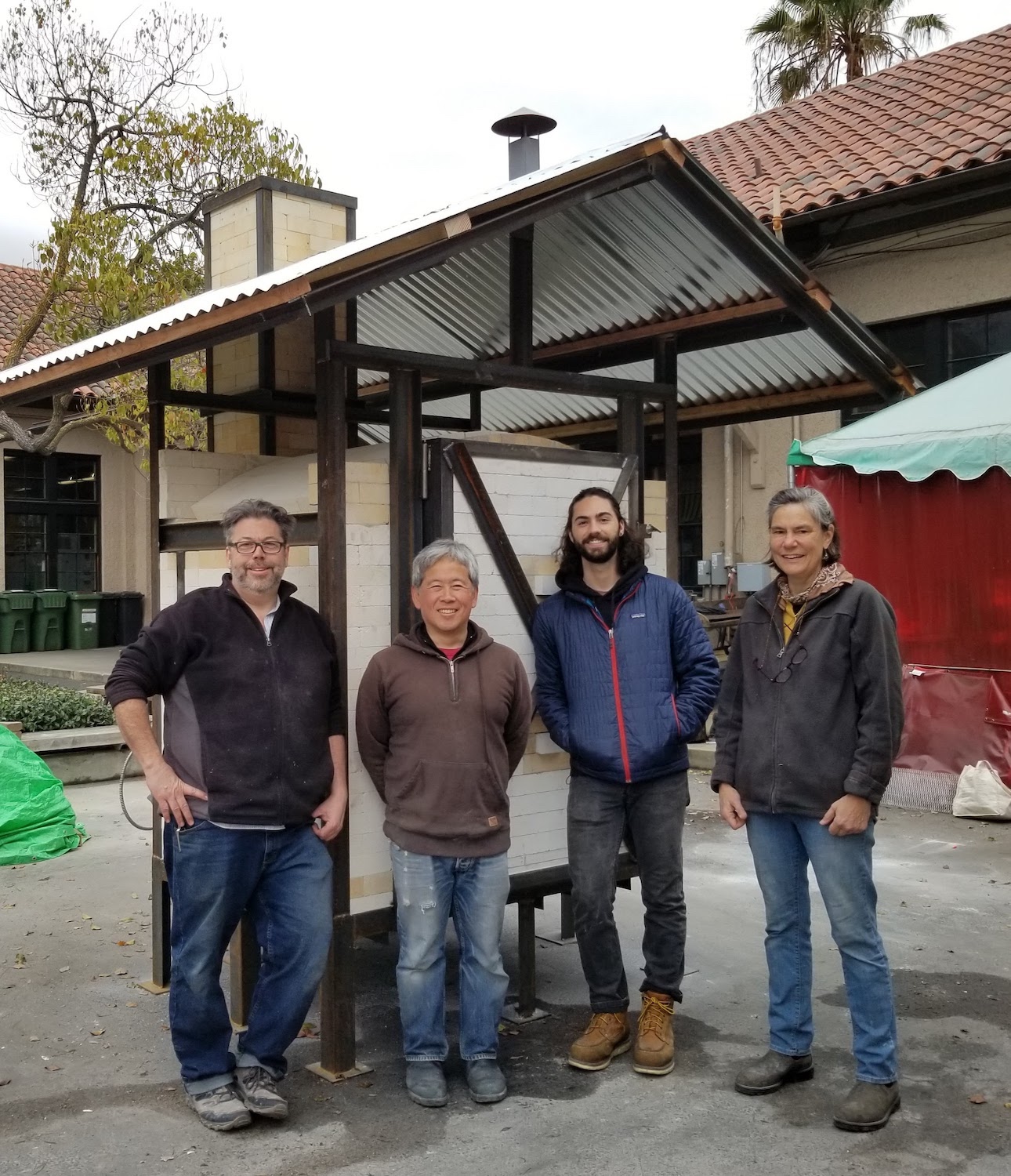by Sally Jackson
One bright spot in February’s gray weather was the completion of a soda kiln in the courtyard of Stanford University’s Product Realization Lab (PRL). Spearheaded by Applied Physics professor and ceramic artist Hideo Mabuchi, and funded by the new cross-disciplinary initiative Making@Stanford (https://making.stanford.edu), the kiln will enable more students to work with clay and more Stanford faculty to incorporate ceramics into their classes. These new opportunities will be organized around courses, workshops, and maker/artist residencies. One of the main goals is to connect ceramics, with its traditions and material culture, with contemporary engineering and materials science as well as computer science, art practice, and the performing arts.
Construction was led by kiln-builder Ted Neal, who is also a faculty member in ceramics at Ball State University in Indiana. I was among several helpers who jumped on board to help. The project involved a lot of steel L-angle, many pallets of bricks, mortar, a MIG welding rig, and a couple of serious power saws. After Ted welded a low, table-like metal frame, we stacked hard and soft bricks to create the floor, walls, chimney, and ceiling arch. Ted then reinforced the kiln with a metal frame and added a hinged door. As final steps we insulated the top of the kiln chamber and mounted a metal roof overhead. Having never built a kiln before, I gained huge appreciation for the precision, expertise, and teamwork that such a project involves. And I truly enjoyed working with Ted, Hedeo, and helpers Christopher Watt and Nicholas Robles. Craig Milroy, Co-Director of the PRL, provided invaluable logistical support throughout the project.
Ceramics are popular with Stanford students, but studio space is limited. The Making@Stanford initiative will connect a wider community of makers and mentors throughout campus. Hideo, for example, co-teaches a class called Japanese Functional Objects, which combines woodworking, ceramics, readings, and lectures to introduce students to the tools and traditions associated with the Japanese tea ceremony. He looks forward to firing work in the soda kiln for this course and many others. For more photos of the construction, visit https://making.stanford.edu/pilot/kiln.

